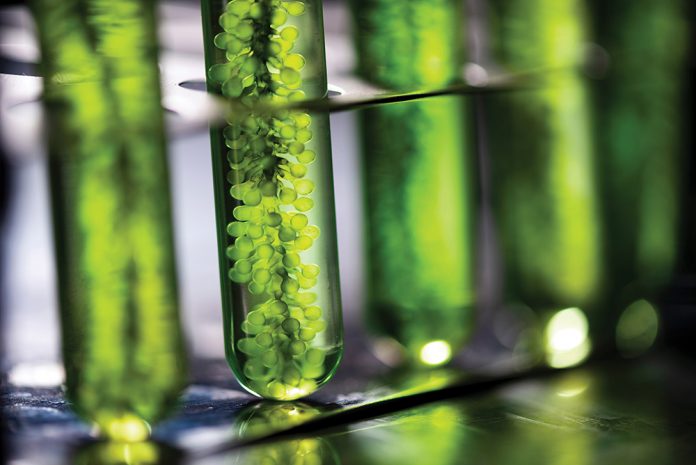Maeve O’Flynn, partner, and Jamie Barcombe, associate, at IP firm Finnegan, examine IP best practice for companies.
Biofuels are fuels produced from renewable sources. First generation biofuels are produced from food stocks, including cereal crops (e.g., wheat, maize), oil crops (e.g., rape or palm oil) and sugar crops (e.g., sugar beet, sugar cane), whereas second generation biofuels – sometimes termed “next generation” or “advanced” biofuels – are produced from sources that are not food stocks. Sources for second generation biofuels include cellulosic waste material (e.g., straw, palm oil mill effluent, bagasse from sugar production), and waste oils and fats. Algae also represent a potential source of lipids for second generation biofuel production.
Biofuels may be used in their pure forms but are typically blended with petrochemical components to provide fuels such as automotive fuels and aviation fuels. Commercial fuels must comply with regulatory standards and these standards increasingly allow for, or even mandate, that biofuel is present as a component of the fuel.
Governments around the world are setting targets for the uptake of biofuels. In the UK, the Renewable Transport Fuel Obligation requires suppliers to source a percentage of fuel from renewable sources. It is estimated that in the UK, biofuel represented 5.4% of total transport fuels in 2020. In the European Union, the Renewable Energy Directive, and the Fuel Quality Directive have set targets for biofuel adoption. Estimates indicate that EU use of biofuel in transport fuels is similar to that in the UK, with biofuel representing around 5% of transport fuels in 2020. Relevant US legislation includes the Energy Independence and Security Act and the Renewal Fuel Standard. It is estimated that 7.3% of motor gasoline, distillate and jet fuel consumed in 2019 in the USA, was a biofuel.
There are significant technical challenges when developing new processes for producing second generation biofuels. For example, to produce a biofuel from a cellulosic source the innovator must develop methods for separating sugars from lignin. After this separation, fermentation and distillation can transform the sugars into biofuel. In another example, algae generate lipids, but do not naturally secrete these lipids. Innovators are attempting to develop algal strains that will release lipids, thereby allowing the separation of lipids from live algal cells and enabling the re-use of the algae.
Biofuel innovation is occurring in academia, in start-up enterprises, and in multinational corporations. All of these innovators should consider how they can use Intellectual Property to protect and monetise their innovation.
One challenge faced by the innovators is that their ultimate product is likely to be indistinguishable from competitor products. Indeed, standards may require that the biofuel is essentially identical to other biofuels that are on the market. Therefore, innovators are seeking to make the same product as competitors, whilst striving to develop processes that are more effective and more efficient than competitor processes, with lower costs and higher output.
Patent protection is available for process innovation, but innovators should be aware of potential pitfalls that can reduce the value of process patents. One issue is that most patent systems specifically provide protection for the “direct product” of a patented process. If your patented process produces a component that undergoes further processing before being incorporated into a commercial fuel, then it may not be possible to establish that sale of such a commercial fuel is protected by the patent. When protecting a biofuel innovation with a process patent the patent claims should include a process claim for making a fuel, i.e., should describe all the steps up to and including blending the biofuel with other fuel components.
Another issue to consider is the global nature of biofuel production. Biofuel processing may take place in several different countries, e.g., a cellulosic waste undergoes separation in a first country, the sugar-containing product is exported to a second country for fermentation and distillation, and blending takes place in a third country to provide the commercial fuel. If a patent claims a multi-step process that occurs across multiple territories, then it will be challenging to enforce such a patent. Patents should be drafted bearing in mind the starting materials and resultant products that are produced in each territory, to facilitate enforcement of patent rights where necessary.
Trade secret protection may be another useful means of protecting process innovation. For example, innovators may choose to maintain the secrecy of their preferred operating conditions, their methods of checking and maintaining quality, and their reactor set-up. However, the challenges of maintaining confidentiality should not be underestimated, particularly if the innovator is working closely with other parties. Additionally, it may be that some process information has to be disclosed as part of regulatory requirements to prove that a fuel is a biofuel. Innovators should carefully assess the likelihood of maintaining confidentiality when deciding whether trade secret protection is appropriate.
An important and often neglected feature of any IP strategy is the need to ensure freedom to operate, i.e., the freedom to commercialise your own technology in view of the IP rights of others. The pace of development in biofuels means that any innovator in this space will need to assess carefully whether there are competitor rights that might impede their activities. If problems are identified, ensuring that you have your own portfolio of IP assets can be helpful as these may be used to negotiate a cross-licence. In addition, evaluating the strength of competitor IP rights could provide opportunities to bring revocation actions to regain freedom to operate.
Biofuel innovators are operating in a fast-moving and competitive field. IP protection can be used as a tool to facilitate the development and commercialisation of such technology.









